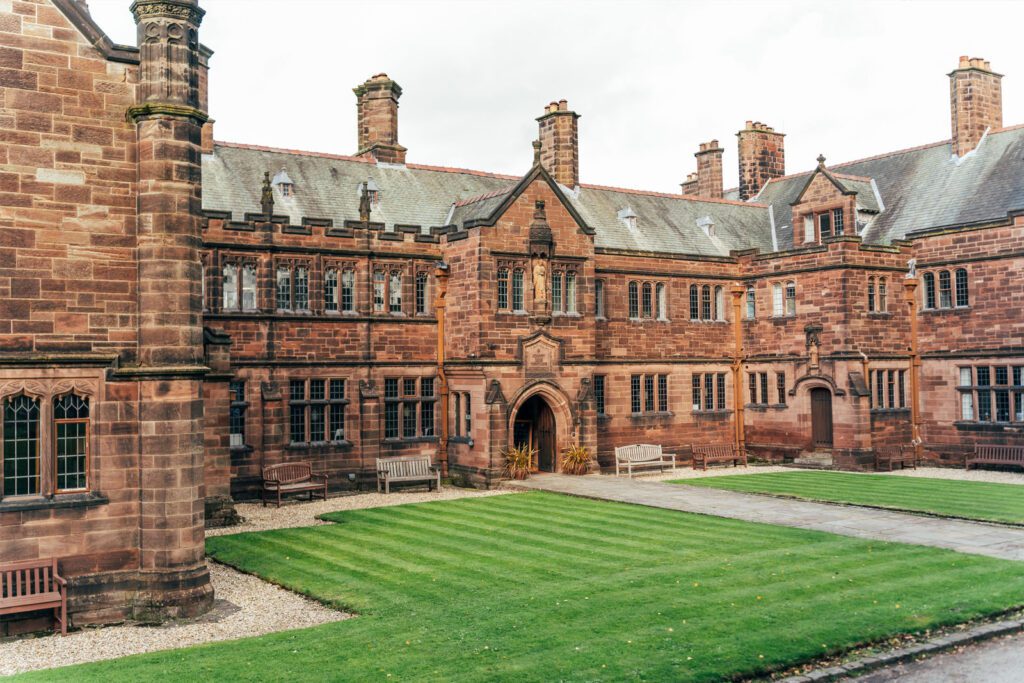Scope and Content
The archive contains five letters from John Ruskin to his former Oxford tutor, Reverend Walter Lucas Brown written between 1842 and 1861. Topics discussed include religion and theology, geology, wealth and labour, travel, and planned meetings between the two correspondents.
John Ruskin was born on the 8th February 1819 at 54 Hunter Street, Brunswick Square, London, the only child of John James Ruskin, a sherry importer, and his wife Margaret Cox, formerly Cock (1781-1881), the daughter of a publican from Croydon. His parents were first cousins.
He was educated by his parents, with the help of private tutors, up to the age of 14. His father helped develop his Romanticism, sharing with him a passion for Byron, Shakespeare, and Walter Scott, as well as passing on a love of drawing, having taken a number of lessons as a youth from the Edinburgh landscape artist Alexander Nasmyth. His love of art was further stimulated by his father’s growing collection of works chiefly by members of the Old Watercolour Society. From his mother he learned his religion, being taught to read the Bible repeatedly from beginning to end, committing large portions to memory. The artistic nurturing of his father and the evangelical self-discipline imparted by his mother had profound and lasting effects on his writing.
From 1834 to 1835 he attended a day school run by the Revd. Thomas Dale of St Matthew’s Chapel, a Church of England establishment in Denmark Hill, and in October 1836 he matriculated as a gentleman commoner at Christ Church, Oxford, already a published author. Ruskin experienced many periods of ill health and depression during his lifetime, one such episode resulting in his withdrawal from Oxford. After a period of convalescence, he sat for a pass degree in April 1842, achieving the usual distinction for an honorary double fourth, taking his MA in October 1843.
In 1848, Ruskin married Euphemia Chalmers Gray (1828-1897), but the marriage was annulled six years later in 1854.
Ruskin first came to widespread attention as an art critic with the publication of Volume I of Modern Painters (1843). In 1869 Ruskin became the first Slade Professor of Fine Arts at Oxford, where he established the Ruskin School of Drawing. In 1871 he began his monthly ‘letters to the workmen and laborers of Great Britain’, published under the title Fors Clavigera (1871-1884).
John Ruskin died of influenza on the 20th January 1900 at Brantwood, and was buried five days later in the churchyard at Coniston. As he had grown weaker, he had been cared for by his second cousin, Joan Severn, who inherited the estate after his death.
The archive consists of 5 paper items.
The items were deposited at Gladstone’s Library by Reverend George C. May on the 12th November 1934. They were sent to an unnamed bishop to be deposited with the trustees of the Library. Reverend George C. May was the cousin of Caroline M. Brown, who was the daughter of Reverend Walter Lucas Brown.
The letters are arranged chronologically.
The catalogue for the archive is available to be viewed here.
Material from the archive is available to be viewed upon request. To arrange a viewing, please complete a Request to View Archives form (available here) at least 14 day’s prior to your intended visit.
All reprographics queries should be directed to [email protected]. Information about Gladstone’s Library’s reprographics services can be found here.
Other letters from John Ruskin to Reverend Walter Lucas Brown are held at Christ Church College, Oxford.
Papers by John Ruskin are also held at University of Manchester Library, the University of Leeds Special Collections, Bangor University Archives, University College London Archives, and the Bodleian Library.
